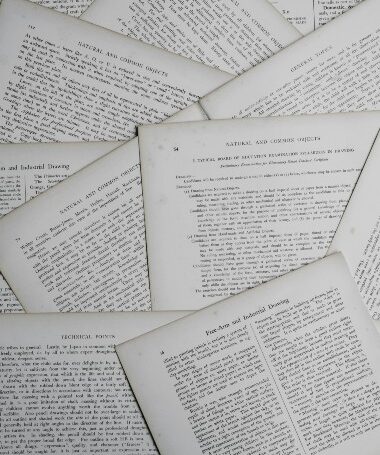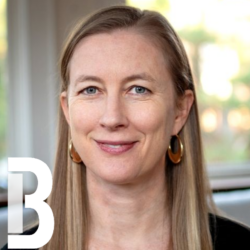How Fake News Pulls Real News Into Its Orbit
 Perhaps the most pernicious aspect of so-called ‘fake news’ on the body politic isn’t the impact of specific stories on the gullible, but the way fake news redirects legitimate media. Like dark matter in the galaxy, it may not be fully visible but its gravitational pull is nonetheless real.
Perhaps the most pernicious aspect of so-called ‘fake news’ on the body politic isn’t the impact of specific stories on the gullible, but the way fake news redirects legitimate media. Like dark matter in the galaxy, it may not be fully visible but its gravitational pull is nonetheless real.
“Fake news can push topics up and make them be covered and make them seem like they’re more relevant,” says Chris Vargo, “and fake news can also push people’s attention away from issues that might otherwise be more important.”
That’s a key takeaway from new research conducted by Vargo, an assistant professor of advertising, public relations and media design at the University of Colorado Boulder; Lei Guo, an assistant professor of emerging media studies at Boston University; and Michelle A. Amazeen is an assistant professor of advertising at Boston University. A paper outlining their findings has just gone online in the journal New Media and Society.

Chris Vargo
“What our paper does show is the real effect [of fake news],” Vargo said in an interview with Social Science Space, “the power of fake news to push things into the agenda of the mainstream and partisan media.” The researchers’ approach rests on network agenda theory – using contextual relationships to see, what was the strongest actor in the network, i.e. what was the issue that was mentioned the most in stories but was also most related to everything else.
The distinction between fake news and partisan news is important, especially with the relative influence of enterprises like Fox News and MSNBC, which may cherry-pick what stories they choose to run with but which don’t actively publish fake news.
Vargo illustrates this “fake news →partisan media → all online media” dynamic using the never-ending hoopla around then-presidential candidate Hillary Clinton using a private email server when she was secretary of state. While there was a widespread perception that there was nothing new there, it remained in the headlines to the last day of the campaign (and beyond). “Our data show that fake news was covering that issue again and again and again. …Fake news had the ability to keep that issue in the national agenda.” Not, he noted, that the mainstream media presented fake news on this count. They didn’t – but their coverage nonetheless endorsed the message that there was something there to report on for a lot longer than it otherwise would have been a story.
So what is, and what isn’t, fake news?
“When I think of fake news, I think of the lack of traditional journalistic norms,” said Vargo, who specializes in big data and analytics his school’s College of Media, Communication and Information. “The definition I take from this paper is that we’re going to consider something fake news if it doesn’t subscribe to the journalistic norms of a traditional journalistic website.
“We know that there have been media that have been somewhat dishonest for a number of years. For example, we know that partisan media behave differently than traditional media, and that sometimes they will selectively take facts and choose to cover one issue instead of another based on how that issue affects the left or the right. So my definition of fake news is something ever farther removed than partisan media, where the medium itself have been known to report false things and they don’t seem to have any sort of known, established journalistic norms.”
 For purposes of the paper in New Media and Society, Vargo and his fellow researchers used a subset of fake news sources identified by the Indiana University’s well-regarded Hoaxy resource as serial offenders. Hoaxy was in part the genesis of Vargo’s research, since he describes noodling around with the site and wondering how many of the 120 fake news websites he saw there had stories appearing on Google News, which aggregates news stories. “Virtually all of them did,” Varo said.
For purposes of the paper in New Media and Society, Vargo and his fellow researchers used a subset of fake news sources identified by the Indiana University’s well-regarded Hoaxy resource as serial offenders. Hoaxy was in part the genesis of Vargo’s research, since he describes noodling around with the site and wondering how many of the 120 fake news websites he saw there had stories appearing on Google News, which aggregates news stories. “Virtually all of them did,” Varo said.
From there, Vargo then wondered what impact that presence had on the legitimate sources.
“An important distinction here,” Vargo said, “is that we are not asserting that each and every story in our database of fake news websites is fake. Instead we are looking more broadly at the agendas of websites that are known to create fake news.”
Some of those, he said, are “camouflaged.” He cited the “Denver Tribune” as an example. “It sounds legitimate, it sounds like a news source, but in fact there is no ‘Denver Tribune.’ It’s just a fake news site that looks like a real news site to fool people.”
That one is easy. Other determinations were trickier. “We did not include Breitbart – there’s dispute whether it’s false or just partisan, kind of straddling that in the middle,” Vargo said of the news site once run by the current president’s chief strategist, Steve Bannon. Rather than get tangled in those distinctions, the authors instead focused on fake news purveyors clearly on the wrong side of a bright line. That in turn helped them focus on what made their work new.
“Previous studies have looked at the individual influence that specific fake news articles have on society,” Vargo said, “Here, we take a look at the entire body of work that a fake news website creates. This allows us to see if fake news agendas have broader effects on the journalism industry.”
The paper also makes clear that these supposed effects are not just a matter of stenography: “It is important to reiterate: the agenda-setting effect does not mean media coverage was littered with the same factual errors. In many cases, news media likely adopted fake news agendas to refute claims.”
Refutation, or more specifically fact-checking, is also examined in the paper. Over the 2014 to 2016 period investigated, Vargo said, “fact-checking is just not getting the attention that maybe it once did. That’s particularly problematic and it just seems to be getting worse.”
Nonetheless, he said fact-checking websites and fact-checking by news organizations does matter: “It still plays a role in society but it’s just not garnering the attention that it once did.” He acknowledged that the political right has long accused the fact-checking industry of scrutinizing the right more closely, but Vargo said other empirical research does not sustain that argument (the current mania for checking Donald Trump’s plethora of tweets excluded, he added).
Fake news is not new –Vargo noted its presence is the penny press and tabloids of yore. What is new are the reduced barriers to entry, and the resultant “explosion” in fake news sources. To reduce the blast radius, so to speak, the researchers looked at political material specifically, not at urban myths. “None of this ‘you won’t believe this woman in Florida and the alligator she wrestled’ kind of stuff,” Vargo explained. Instead, they used a broad set of 18 issues, like the economy, immigration, foreign policy. A couple of issues echoed more loudly, such as foreign affairs, immigration and religion, than others. What linked these areas, Vargo said, was the inability of the audience to conclusively disprove things immediately.
Partisan media often served as the vector for fake news infecting the mainstream media. “One possible explanation for this finding,” the paper explains, “is that partisan media have begun to leverage fake news to bolster and selectively support their own agendas. If this is indeed the case, it is yet another cause for concern regarding the effects of partisan media on a healthy society.”
While the study doesn’t address this, Vargo thinks it’s a case of selective citation- that people desperate to bolster their claims will hew to whatever source they can, and the final push as voting day loomed amplified the tendency of partisan media to cite fake news that supported their agenda. So the fake news tends to support confirmation bias rather than creating (as opposed to sustaining) a new story line.
In the study period, while there were some fake sources that were liberal leaning, the sources of fake news tended to be right-leaning, especially as the presidential election got closer. Nonetheless, especially as the Trump administration grinds on, Vargo insisted fake news is not a partisan phenomenon. While partisan media are often the shock troops of fake news, the issue itself isn’t really a partisan one: “Misinformation has been around for a while, unfortunately.”




























































































